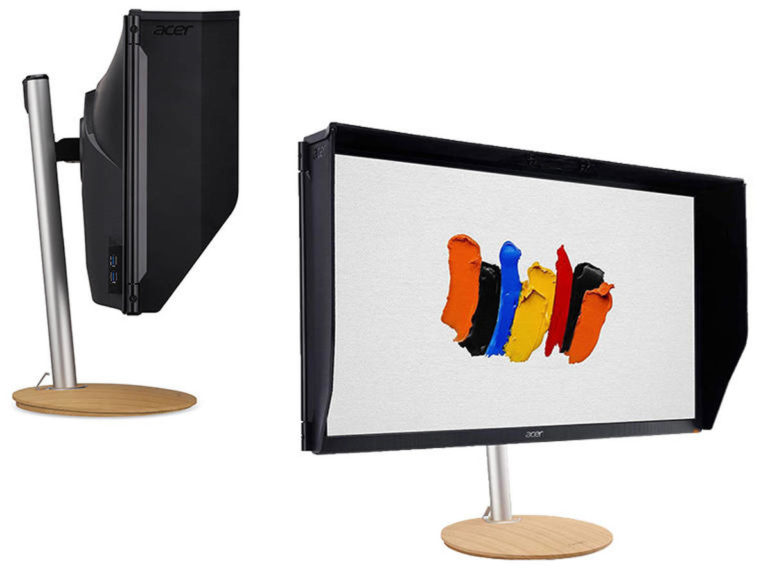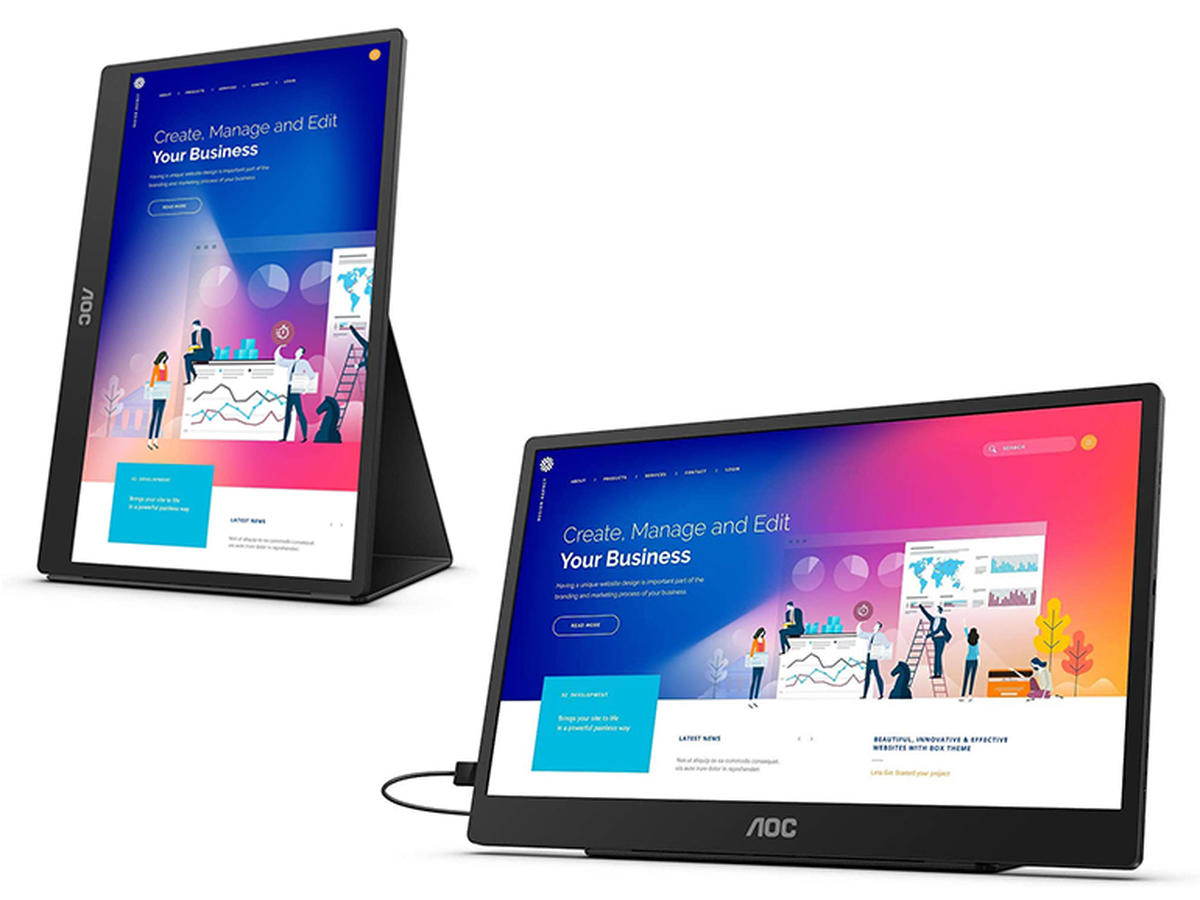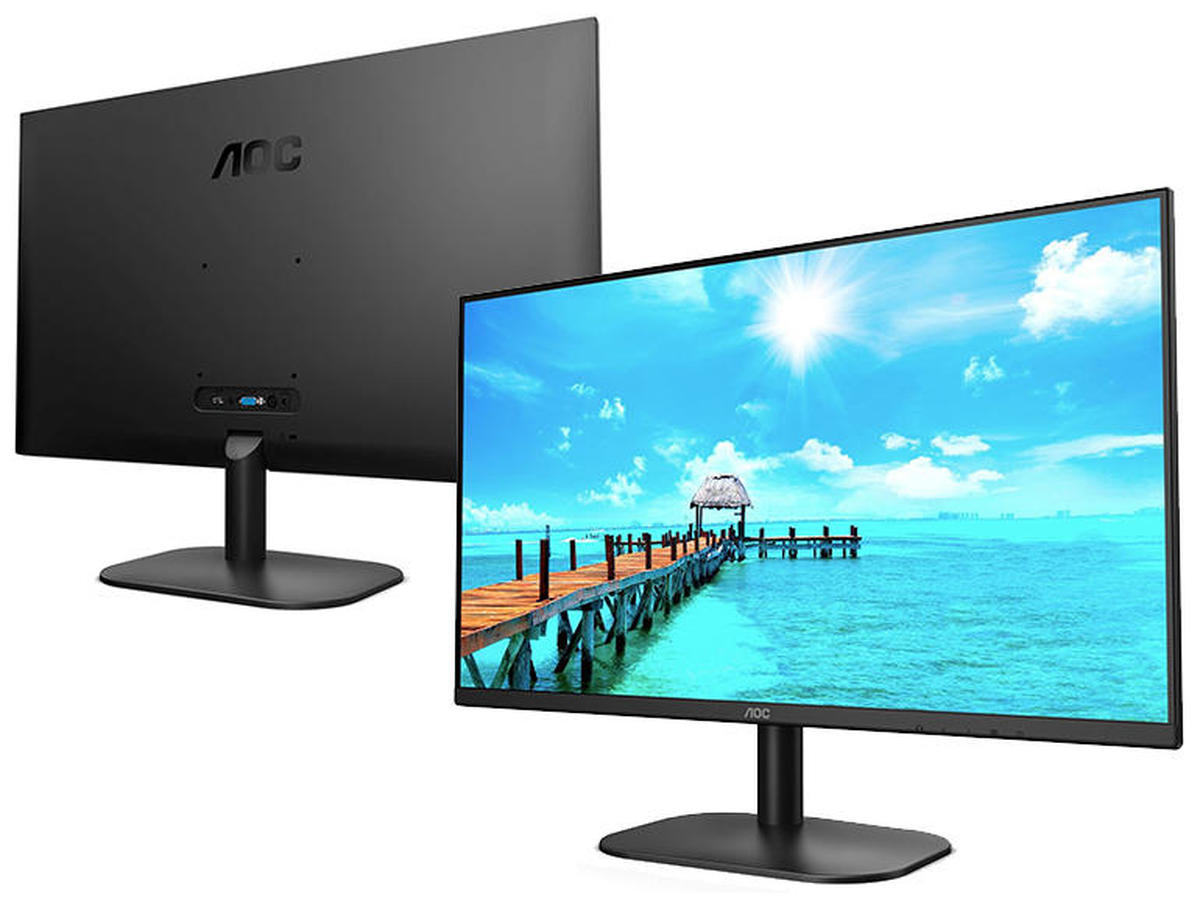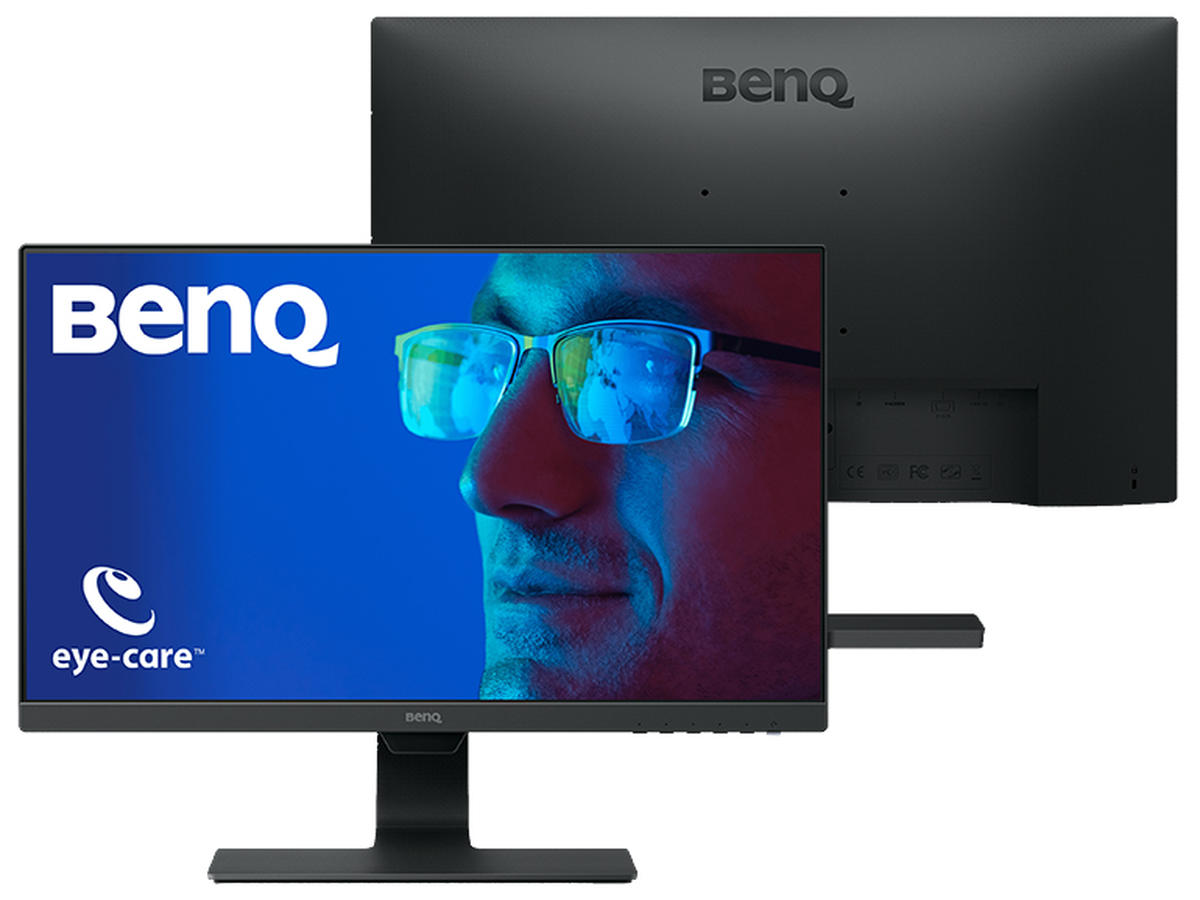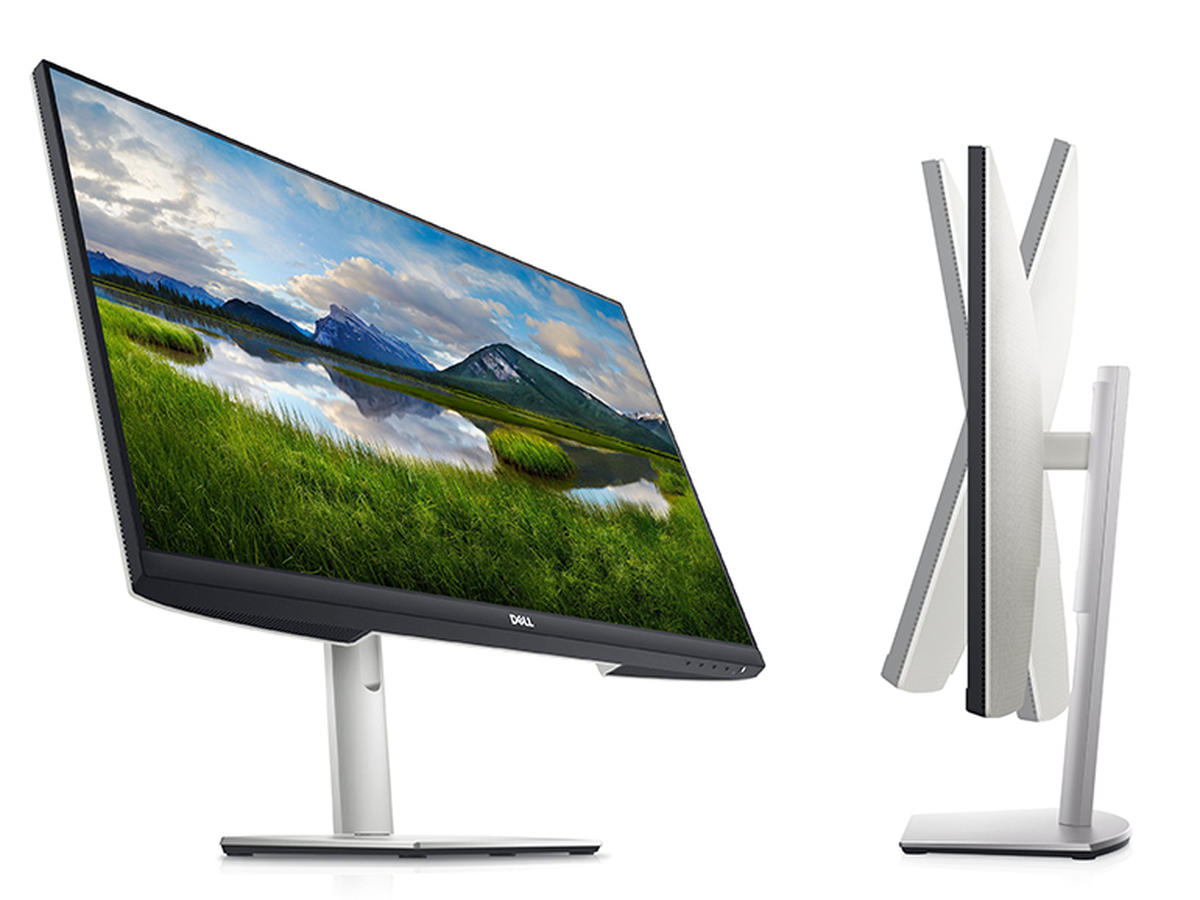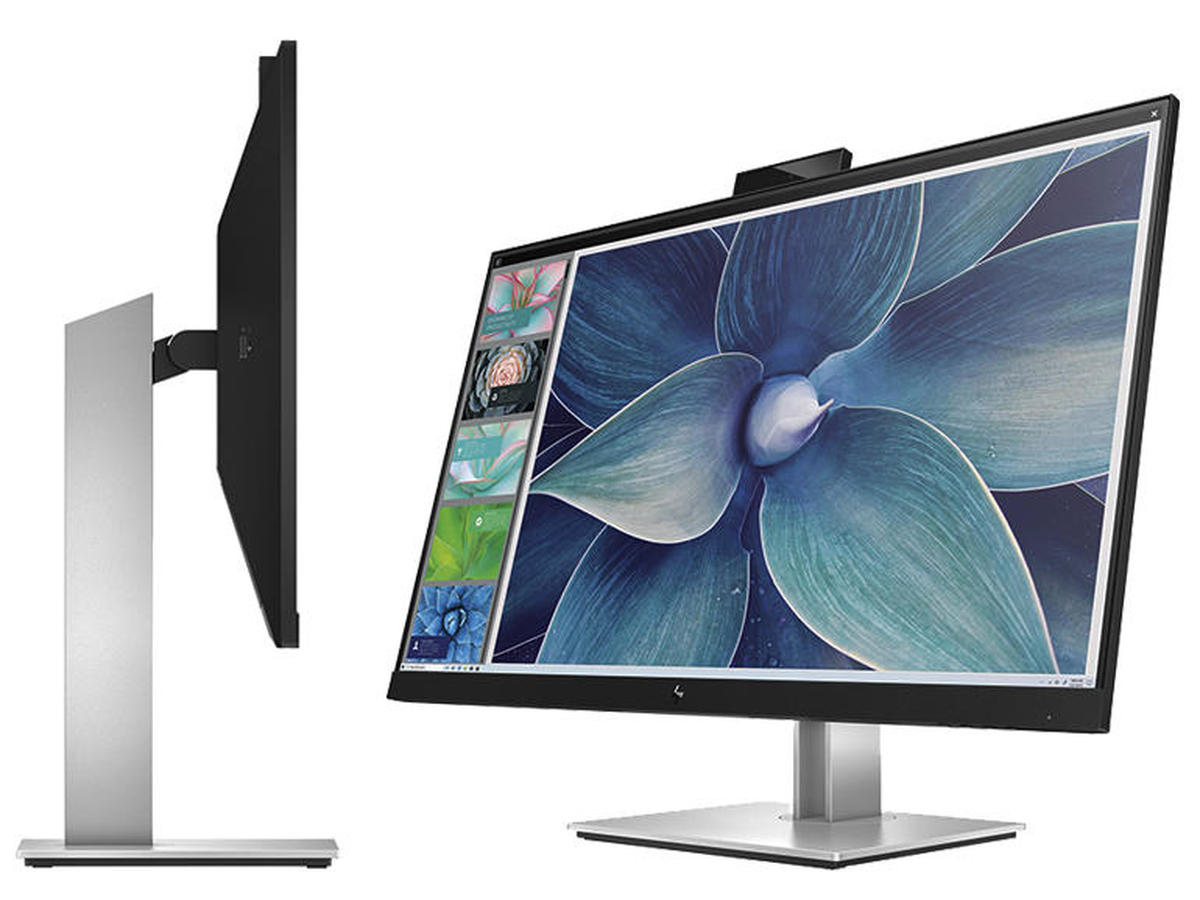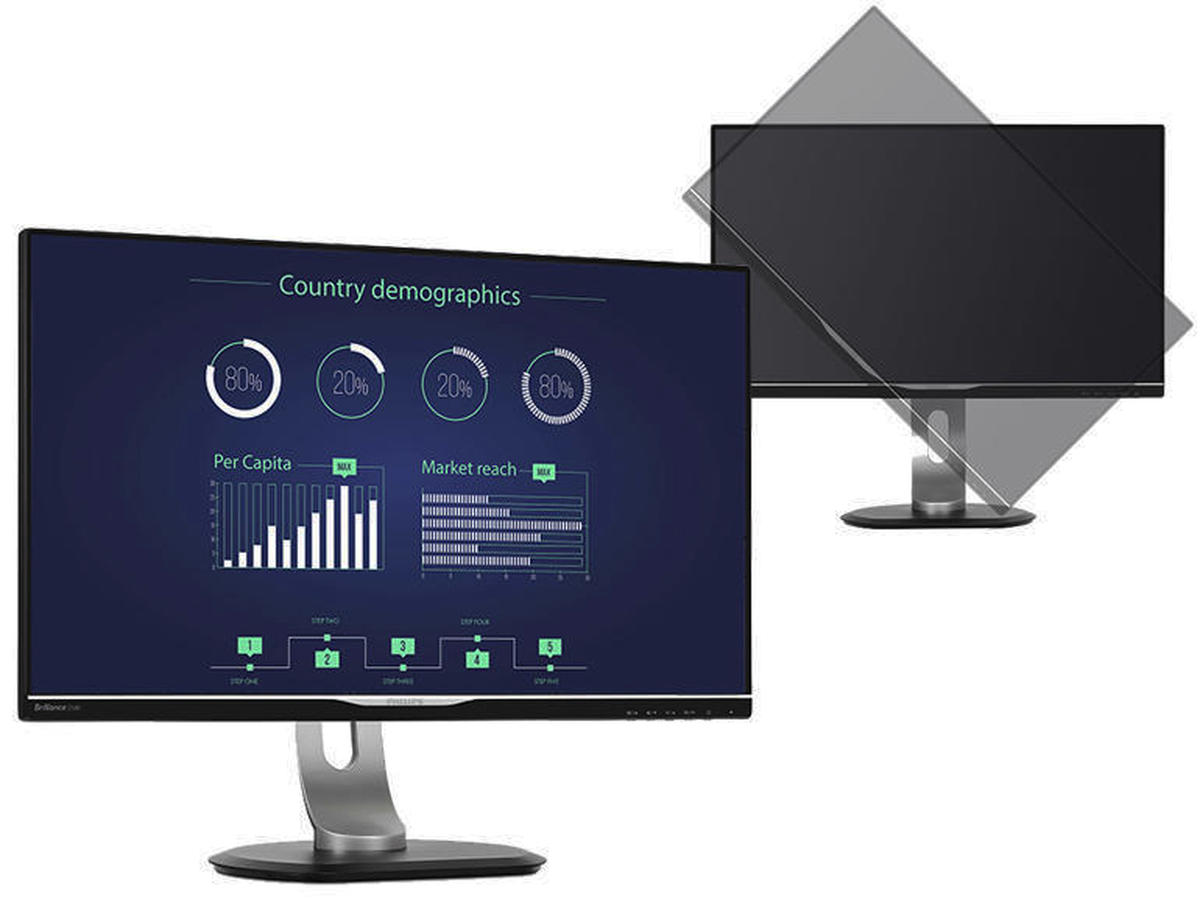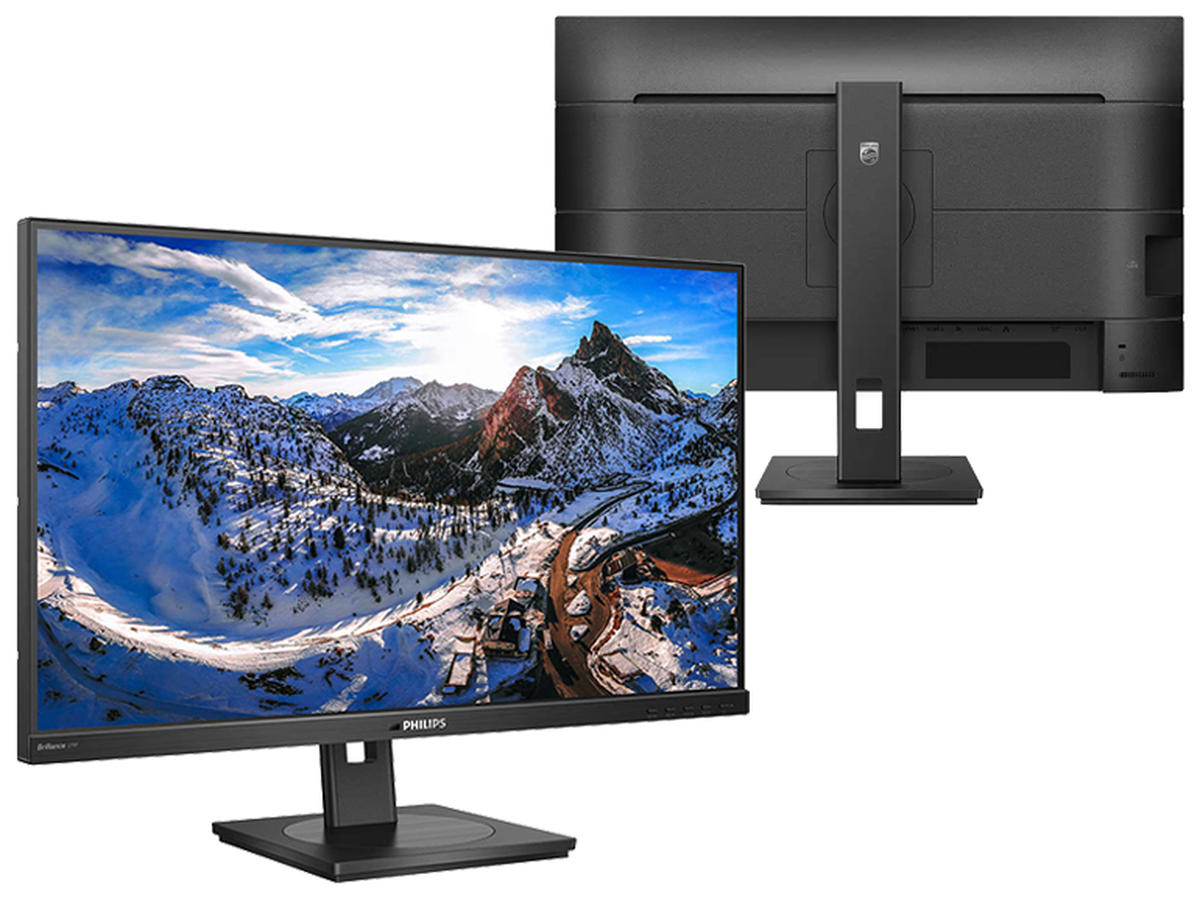Many business users rely on a laptop as their primary work tool — and with millions of people now regularly working from home, there’s continuing demand for external monitors. In Q3 2020, for example, worldwide monitor shipments grew 15.9% compared to the same quarter in 2019, according to analyst IDC, with consumer demand driving much of the upswing.
“Whether it is studying, working, or gaming, many consumers have a new-found consideration for their long-neglected monitors as uncertainty about office and school attendance persist,” said IDC research manager Jay Chou. “With inventory still at healthy levels and enticing promotions for gaming as well as bigger displays, IDC believes the solid momentum should last well into the first half of 2021,” Chou added.
Having a larger display is obviously easier on the eye when you’re staring at the screen all day long, and can also help to reduce neck and back problems as you don’t have to keep bending over your laptop while working.
There are other key factors as well, with size being the most obvious. If you’re simply running Microsoft Office and firing off emails to colleagues, then a low-cost 21-inch or 24-inch monitor might well be adequate (especially if it’s hogging your kitchen table). However, 27-inch monitors are increasingly popular — and increasingly affordable, too. Larger screens are obviously good for graphics work or presentations, but number-crunching software such as Excel can also benefit from as much screen space as possible.
Cheaper monitors tend to be limited to FHD resolution (1920 x 1080 pixels) and that’s acceptable for web browsing or simple word processing and spreadsheet work. However, higher resolutions such as QHD (2560 x 1440) provide more room for browsing through documents and having multiple documents or windows on-screen at the same time. Meanwhile, 4K or UHD displays (3840 x 2160) are tempting, and pretty much essential for graphics and video software, but remain something of a luxury for routine office work.
Connectivity is important too, especially for owners of older ‘legacy’ devices, so you’ll need to make sure you can actually connect your new monitor to your laptop. Many laptops and PCs use either HDMI or DisplayPort to connect to external displays, although there may be a few old PCs still floating around that use the now-ancient VGA or DVI interfaces. And, of course, many new laptops (PC and Mac) include USB-C, which is ideal for monitors in use at home as a single USB-C cable can provide video and data connections, and even charge your laptop too.
Hood helps to block out external light sources and glare
Screen size: 27in | Resolution: 2560 x 1440 (108.8ppi) | Refresh rate: 144Hz | Aspect ratio: 16:9 | Contrast ratio: 1000:1 | Response time: 1ms | Colors:1.07 billion | Color gamut: 99% Adobe RGB | HDR support: HDR 600 | Brightness: 600 cd/m² | Backlight: LED | Viewing angles: 178 degrees/178 degrees | Panel: IPS | Stand adjustment: Tilt (-5 degrees~35 degrees), swivel (360 degrees), height (7.09in.) | Video inputs: 2x HDMI, DisplayPort, USB-C | Other ports: 4x USB 3.0, 3.5mm headphone jack | Speakers: 2x 4W | Dimensions: 62.9 x 44.1-54.1 x 30.2cm | Weight: 6.63kg | Price: $750
Acer’s ConceptD displays are quite expensive, and are primarily designed for professional graphics, design and video work. The CP5 is Acer’s mid-range 27-inch model, priced at $749.99.
Its 2560-by-1440 resolution (108.8ppi) is relatively modest, but the CP5 supports 99% of the Adobe RGB color standard, along with HDR 600. There are three video input options — HDMI, DisplayPort and USB-C — to provide compatibility with a wide range of devices, and the USB-C port can charge your laptop at the same time.
The 144Hz refresh rate will be easy on the eye, and the display also includes a light sensor that automatically adjusts brightness levels as the ambient light changes throughout the day. The CP5 includes a hood that helps to block out external light sources and glare while you’re working. Video editors who need 4K resolution can opt for the top-of-the-range CP7, which costs around $2200 — although that’s still a lot cheaper than Apple’s Pro Display XDR.
A smaller, portable display
Screen size: 15.6in. | Resolution: 1920 x 1080 (141.2ppi) | Refresh rate: 60Hz | Aspect ratio: 16:9 | Contrast ratio: 700:1 | Response time: 4ms | Colors:262,000 | Color gamut: n/s | HDR support: n/s | Brightness: 250 cd/m² | Backlight: WLED | Viewing angles: n/s | Panel: IPS, 10-point capacitive touch | Stand adjustment: Tilt & pivot | Video inputs: micro-HDMI, 2x USB-C | Other ports: 2x USB-C, 3.5mm headphone jack | Speakers: 2x 1W | Dimensions: 44.5 x 30 x 8.5cm | Weight: 1kg | Price: $320
A large screen is great for graphics work or delving into large spreadsheets, but sometimes a smaller, portable display can come in handy — especially if you’re quickly trying to fire off a few emails on a smartphone or tablet while working from home.
AOC makes a number of portable displays, all with 15.6-inch screens and 1920-by-1080 resolution (141.2ppi). The 16T2 is the top-of-the-range model, priced at $319.99, but it’s packed with useful features. The screen measures just 8.5mm thick and weighs 1kg, so it’s easy to carry around at home or in a bag when you’re travelling. It includes two USB-C ports and micro-HDMI to provide compatibility with a wide range of devices, and has its own built-in battery so that it doesn’t drain your laptop’s battery. There’s a small set of stereo speakers built in, and the display is touch-sensitive too — when connected via USB-C — allowing you to quickly jot down notes and annotations while you’re working.
The low price means there are no built-in speakers
Screen size: 27in | Resolution: 1920 x 1080 (81.6ppi) | Refresh rate: 75Hz | Aspect ratio: 16:9 | Contrast ratio 1000:1 | Response time: 8ms | Colors: 16.7 million | Color gamut: 74% Adobe RGB, 101% sRGB | HDR support: n/s | Brightness: 250 cd/m² | Backlight: WLED | Viewing angles: 178 degrees/178 degrees | Panel: IPS | Stand adjustment: tilt -5 degrees/21.5 degrees | Video inputs: HDMI 1.4, VGA | Other ports: 3.5mm headphone jack | Speakers: none | Dimensions: 42 x 54 x 18.7cm (inc. base) | Weight: 3.6kg | Price: $199
AOC’s ‘Basic’ range focuses on providing large-screen displays at a competitive price. The 27B2H is the successor to last year’s 27B1H, and manages to offer even better value for money, with a 27-inch display priced at just $199.
The specification is fairly basic too, with just 1920-by-1080 resolution (81.6ppi), although that’s still adequate for mainstream office software such as Word and Excel, and Zoom calls when you’re working from home. The 27B2H also provides 75Hz refresh rate, along with flicker-free and ‘low-blue’ modes to help reduce eye-strain while you’re working. There’s no USB-C or DisplayPort interfaces, so it’s not the best choice for newer laptops and PCs, but the HDMI and VGA ports will be handy for people who are still making do with older devices. The low price means there are no built-in speakers, but there’s a 3.5mm audio jack for external speakers or headphones.
Analyzes the image being displayed to enhance or tone down parts
Screen size: 23.8in | Resolution: 1920 by 1080 (92.6dpi) | Refresh rate: 60Hz | Aspect ratio: 16:9 | Contrast ratio: 1000:1 | Response time: 5ms | Colors: 16.7 million | Color gamut: 72% NTSC | HDR support: n/s | Brightness: 250 cd/m² | Backlight: LED | Viewing angles: 178 degrees/178 degrees | Panel: IPS | Stand adjustment: tilt -5˚/-20˚ | Video inputs: HDMI 1.4, DisplayPort 1.2, VGA | Other ports: 3.5mm headphone/line-in jack | Speakers :2x 1W | Dimensions: 42 x 54 x 17.5cm (with stand) | Weight: 3.84kg (with stand) | Price: $120
If you’re burning the midnight oil working from home, then you may appreciate a display such as BenQ’s Eye-care GW2480. As well as the blue light and flicker-free filters now offered by many monitors, the GW2480 has a number of ‘brightness intelligence’ features that are designed to enhance visibility and reduce eye-strain.
A built-in sensor monitors the levels of ambient light in the room and adjusts the screen brightness for comfortable viewing. It can also analyze the image being displayed on the screen itself, and enhance darker areas or tone down harsh, bright parts of the image. And, for people with color vision problems, there are filters that allow you to adjust the levels of red and green displayed on the screen.
Prices start at $119.99 for the 24-inch model shown here, which has 1920 by 1080 resolution (92.6dpi). A 27-inch model, the GW2780, is also available for $179.99.
Loaded with features that are handy for video conferencing
Screen size: 23.8in | Resolution: 1920 by 1080 (92.6dpi) | Refresh rate: 60Hz | Aspect ratio: 16:9 | Contrast ratio: 1000:1 | Response time: 6ms | Colors: 16.7 million | Color gamut: 83% (CIE 1976), 72% (CIE 1931) | HDR support: n/s | Brightness: 250 cd/m² | Backlight: WLED | Viewing angles: 178 degrees/178 degrees | Panel IPS | Stand adjustment: tilt (-5 degrees/21 degrees), swivel (-90 degrees), pivot (90 degrees), height (4.9in.) | Video inputs: HDMI 1.4, DisplayPort 1.2, VGA | Other ports: USB 3.0 hub (1 upstream, 4 downstream), 3.5mm headphone jack | Speakers: 2 x 5.0W | Dimensions: 54.9 x 37.6 x 18cm (+ stand), 54.9 x 36.1 x 5.1cm (- stand) | Weight: 5.6kg (+ stand), 3.6kg (- stand) | Price: $288
Video conferencing has been the key application for remote workers during the pandemic, and Dell’s P2418HZ is ready-made for that purpose.
The 23.8-inch display is fairly conventional, with 1920 by 1080 resolution (92.6dpi), and at $287.99 the P2418HZ is pricey for a display with modest specifications. However, it’s loaded with features that will be handy for video conferencing and general office use.
The video side of things is handled by an integrated 2MP webcam, which is certified for use with Windows Hello and Skype for Business. There’s a built-in set of stereo speakers (2 x 5W), and a 3.5mm combo audio jack for headphones or microphone. The display can pivot into the upright (portrait) position for talking-head video sessions, and there’s also an integrated USB hub with four USB 3.0 ports for all your office peripherals. The P2418HZ includes VGA, HDMI, and DisplayPort for the video connection, but there’s no USB-C.
Ideal for running Microsoft Office and other productivity software
Screen size: 27in | Resolution: 256 x 1440 (108.8ppi) | Refresh rate: 75Hz | Aspect ratio: 16:9 | Contrast ratio: 1000:1 | Response time: 4 – 8ms | Colors: 16.7 million | Color gamut: 99% sRGB | HDR support: n/s | Brightness: 350 cd/m² | Backlight: WLED | Viewing angles: 178 degrees/178 degrees | Panel: IPS | Stand adjustment: tilt -5 degrees/21 degrees, swivel (-30 degrees/30 degrees), pivot (-90 degrees/90 degrees) | Video inputs: 2x HDMI 1.4, DisplayPort 1.2 | Other ports: 3.5mm headphone jack | Speakers: 2x 3W | Dimensions: 61.2 x 51 x 17.3cm (+ stand), 61.2 x 36.6 x 5.59cm (- stand) | Weight: 4.4kg (-stand) | Price:$260
The Dell E2720H that we covered last year is still available from Dell if you’re after a low-cost ($174.99) 27-inch 1920-by-1080 (81.6ppi) display for working from home. The newer Dell S2721DS is a little more expensive, at $259.99, but it steps up to a more useful 2560-by-1440 resolution (108.8ppi), which will be ideal for running Microsoft Office and other productivity software. The stand allows you to adjust the height, tilt, and even rotate the screen into the upright (portrait) position if you need to, and there’s a built-in set of stereo speakers as well.
The display provides three input options for connecting multiple devices — two HDMI ports and a DisplayPort — and the S2721DS supports a 75Hz refresh rate to reduce eye-strain, along with a ComfortView mode that reduces blue light emissions. There’s also a tempting 4K (3840 x 2160, 163.2ppi) model, the S2721QS, which costs $374.99.
Impressive connectivity features will ensure that it earns its keep
Screen size: 27in | Resolution: 2560 x 1440 (108.8ppi) | Aspect ratio: 16:9 | Contrast ratio: 1000:1 | Response time: 5ms | Colors: n/s | Color gamut: n/s | HDR support: n/s | Brightness: 300 cd/m² | Backlight: n/s | Viewing angles: 178 degrees/178 degrees | Panel: IPS | Stand adjustment: tilt (-5/+20 degrees), swivel (30 degrees), pivot (90 degrees), height (15cm) | Video inputs: USB-C, HDMI 1.4, DisplayPort 1.2 | Other ports: RJ-45 Ethernet, USB-C, 4x USB 3.0, 3.5mm headphone jack | Speakers: no | Dimensions: 61.4 x 36.6 x 4.85cm | Weight: 8.2kg | Price: $499
HP has embraced USB-C for its new range of ‘Advanced Docking’ monitors. Admittedly, the E27d is fairly expensive at $499 for a display with 2560-by-1440 resolution (108.8dpi), but its impressive connectivity features will ensure that it earns its keep — especially when you’re working at home on a laptop.
There are HDMI, DisplayPort and USB-C connectors for video input, with a built-in KVM switch (keyboard/video/mouse) that allows you to connect two computers to the display and share the same keyboard and mouse. Using the USB-C input allows you to charge your laptop via the monitor, and also provides access to the monitor’s integrated USB hub, which provides four USB 3.0 ports for connecting your office accessories, along with an additional USB-C port for devices, such as hard drives, that may require power over USB-C. There’s even a built-in 1080p IR-equipped webcam with a privacy slider that you can use for video calls, or just to log into your PC using Windows Hello.
Anti-glare coating and a ‘low-blue’ mode reduces eyestrain
Screen size: 27in | Resolution: 3840 x 2160 (163.2dpi) | Refresh rate: 60Hz | Aspect ratio: 16:9 | Contrast ratio: 1000:1 | Response time: 5ms | Colors: n/s | Color gamut: 99% sRGB | HDR support: n/s | Brightness: 300 cd/m² | Backlight: n/s | Viewing angles: 178 degrees/178 degrees | Panel: IPS | Stand adjustment: tilt (–5/+16 degrees), height (10cm) | Video inputs: HDMI, DisplayPort 1.2, Wi-Fi Direct | Other ports: USB-A upstream, 3x USB 3.2 downstream, 3.5mm headphone jack | Speakers: stereo | Dimensions: 50.1 x 61.3 x 19.3cm | Weight: 7.1kg | Price: $480
Any 4K display costing less than £500 is good value, but HP’s $479.99 U27 manages to throw in wireless connectivity along with other useful features. The slimline 27-inch display provides attractive image quality with 3840-by-2160 resolution (163.2dpi) and 99% of the sRGB color standard, making it suitable for graphics and photo editing, as well as word processing and web browsing. It also includes an anti-glare coating and a ‘low-blue’ mode to reduce eyestrain.
There are HDMI and DisplayPort interfaces for wired video input, along with a set of internal speakers and a three-port USB hub. It’s a little disappointing that there’s no USB-C as well, but the key feature of the U27 is, of course, that wireless option. If you’ve got a PC running Windows 10, then you can just hit ‘Windows-Key + K’ to pair with the monitor over Wi-Fi, making it easy to quickly get a bigger picture from your laptop at home, or to quickly get set up for a presentation in the office.
Provides a number of preset display modes
Screen size: 25in | Resolution: 2560 x 1440 (117.5ppi) | Refresh rate: 60Hz | Aspect ratio: 16:9 | Contrast ratio: 1000:1 | Response time: 5ms | Colors: 16.7 million | Color gamut: 90% NTSC, 109% sRGB | HDR support: n/s | Brightness: 350 cd/m² | Backlight: WLED | Viewing angles: 178 degrees/178 degrees | Panel: IPS | Stand adjustment: tilt (-5 degrees/20 degrees), swivel (-65 degrees/65 degrees), pivot (90 degrees), height (13cm) | Video inputs: VGA, DVI-Dual Link, DisplayPort 1.2, HDMI 1.4, USB-C | Other ports: 3x USB 3.0 | Speakers: 2x 2W, 3.5mm headphone jack | Dimensions: 57.1 x 34.4 x 5.5cm | Weight: 7kg | Price $617
Philips’ 329P9H was one of the first monitors to use USB-C to combine a high-quality display with impressive connectivity for office users. That imposing 32-inch display is pretty expensive, but Philips has more affordable models, such as the 258B6QUEB, that are ideal for working from home. It is, admittedly, still a little expensive for a 25-inch display, but its 2560-by-1440 resolution (117.5ppi) is easy on the eye, and provides a number of preset display modes for office work and graphics work, and video watching. The stand allows you to tilt, swivel and adjust the height, and you can rotate the screen into the upright (portrait) position as well.
It’s well connected too, with HDMI, DisplayPort, DVI and VGA ports for older laptops and PCs, as well as USB-C for video and data connections, and even charging your laptop over a single cable. And, like its 32-inch big brother, the 258B6QUEB includes a handy hub that provides three USB 3.0 ports for your office peripherals, stereo speakers with audio input and output. There’s even an RJ-45 Ethernet port for connecting to a wired network.
Suitable for graphics, presentations and photo-editing work
Screen size: 27in. | Resolution: 3840 x 2160 (163.2dpi) | Refresh rate: 60Hz | Aspect ratio: 16:9 | Contrast ratio: 1000:1 | Response time: 4ms | Colors: 1.07 billion | Color gamut: 103% NTSC, 122% sRGB | HDR support: n/s | Brightness: 350 cd/m² | Backlight: WLED | Viewing angles: 178 degrees/178 degrees | Panel: IPS | Stand adjustment: tilt (-5 degrees/35 degrees), swivel (-/+180 degrees), pivot (-/+90 degrees), height (15cm) | Video inputs: 2x HDMI 2.0, DisplayPort 1.4, USB-C 3.2 Gen 2 | Other ports: USB-C (upstream), 4x USB 3.2 (downstream), RJ-45 Ethernet | Speakers: 2x 3W | Dimensions: 61.3 x 53.7 x 20.5cm | Weight: 7.38kg | Price: $380
Priced at just $379.99, the Philips 279P1 provides a 27-inch display with full 4K resolution (3840 x 2160, 163.2dpi). It supports 122% of the sRGB color standard, making it suitable for graphics, presentations and photo-editing work, as well as general office productivity software. The stand also allows you to adjust height, tilt and swivel, and even to rotate the screen into the upright (portrait) position.
The 279P1 includes two HDMI ports, DisplayPort and USB-C for video input. The USB-C port makes it ideal for working from home with your laptop, as it can charge the device; it also allows you to use the built-in USB hub that includes four additional USB ports and RJ-45 Ethernet for a wired network connection.
